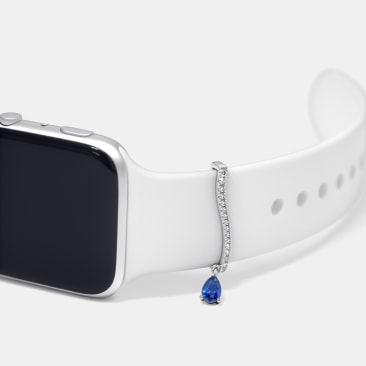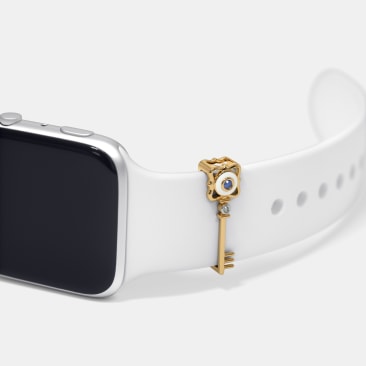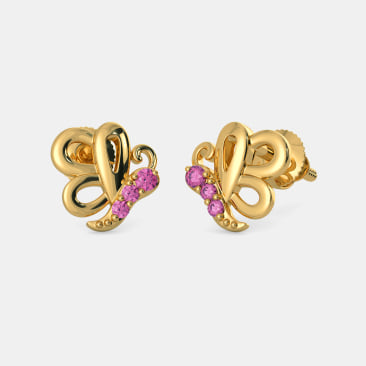Sapphire
What do Kate Middleton, Aishwarya Rai, Amitabh Bachchan, and A.R Rahman have in common, besides their celebritydom? Don’t go too far or wide to find the answer. They all have a sapphire ring. Middleton’s ring which once belonged to her late mother-in-law Princess Diana is an iconic piece in the history of jewellery. It seems there is a strong love-affair between celebrities and this gemstone. And who can be blamed? Such is their beauty. Such is their lustre. In fact, until the seventeenth century, only royalty and high priests could wear this exquisite gem.
Today, things have changed. Are you planning to get yourself a pair of sapphire earrings or a finely crafted necklace studded with these blue beauties? Here is a complete guide to the gemstone – its history, features, properties, types, and instructions for buying and caring.
Overview
Sapphires belong to the corundum family, the same family where ruby comes from. The very name is likely to bring the image of a blue-coloured stone to your mind. Well, sapphires are not always blue even though the blue variety is the most popular one. You can also buy this gem in white, yellow, and pink colours. Green, violet, and orange are some of the less common colours you can find this stone in. Some of them can even change colour depending on the lighting.
In India, the blue sapphire is known as the Neelam stone and is part of the navaratna stones. On the Mohs scale, they have a value of nine, which means they are the hardest stone after diamonds. They are known to be stones of wisdom, good fortune, and serenity. Some of the famous sapphires in the history include the Logan Sapphire, Star of Bombay, and the Rockefeller.
History of Sapphires
The stone derives its name from the Greek word sappheiros. As interesting as it might sound, this name was once used to refer to another stone, Lapis Lazuli. Sapphires have always been associated with royalty, romance, truth, and faithfulness. For this reason, it has been the most favoured gemstone by nobility and the clergy alike.
According to the ancient Persians, the earth was a giant blue sapphire and the sky was simply the light reflected off it. It is perhaps with reference to this that clergy in the Middle Ages wore rings made of this stone to symbolise heaven. Ancient Greeks and Romans believed that blue sapphires were protective talismans.
Types of Sapphires
This gem is typically categorised into different types based its colour. Sapphires are usually understood to be brilliant blue gemstones. However, the blue gem is only one of the many different types available.
Pink Sapphires get their exceptional hue from traces of chromium. The colour of this variety varies from a pale baby pink to a deep magenta. At one point in time, these pink gems were considered rare. However, in the late 1900s, large deposits of it were discovered in Madagascar that made these gemstones more easily available.
Yellow sapphires with a bright canary yellow shade are also very popular among jewellery lovers. This colour is the result of traces of iron in the corundum or of the stone being exposed to low levels of radiation. In India, this stone is called Pukhraj Ratna and as per astrology, it is one of the most auspicious gemstones.
The Padparadscha sapphire has a unique salmon colour and can be afforded only by a few. It derives its name from the Sinhalese term for aquatic lotus blossoms.
Inclusions in most gemstones are undesirable, but when it comes to sapphires, they can further enhance the stone’s beauty. When viewed from above, star sapphires will exhibit a six-rayed star floating across the surface. This is the result of small needle-like rutile inclusions. This phenomenon can be seen in almost all types. Star sapphires are rare and most of these gemstones are sold untreated.
Birthstones and Anniversary Stones
Sapphires are the birthstone for September. They are also connected to a couple’s fifth and forty-fifth wedding anniversary. According to Indian astrology, the blue variant represents Saturn and the yellow variant represents Jupiter.
Real Sapphires vs Fake Sapphires
This gem may be expensive but its price does not make it any less popular. However, the hefty price tag has led to a number of occasions where inferior stones or coloured glass were sold in place of sapphires. Knowing how to identify a real stone can help you buy real sapphire rings, pendants, bangles, and other trinkets. Real sapphires are not shiny. They do not reflect other colours. They are also the second hardest gemstone in the world and hence, they are resistant to scratches. If the stone has visible nicks or scratches, you can be sure that it is not real. Also, look out for bubbles that are present in glass but absent in sapphires.
How to Buy Sapphire Jewellery?
Sapphires are one of the four most precious gemstones in the world. So, you must be careful when buying jewellery studded with this stone. An easy way to make your choice is to look at the 4 ‘C’s of the gemstone.
Cut: The shape and size of uncut sapphires play a key role in the final cut of the gemstone. Since these stones are usually found in the form of a barrel or pyramid, finished stones often have a deep cut. The cut of a blue sapphire also accommodates colour zones. Star sapphires are cut as cabochons i.e., they are not faceted. The final shape of these gemstones depends on the orientation of the star as the stone should look symmetrical. In most cases, the dome is usually two-thirds of the stone’s width.
Colour: Some sapphires are even-toned while others have distinctive colour zones. The more even the colour, the more valuable the stone will be. The best ones are those that feature brightly saturated colours without darkening the stone. Blue sapphires that show a greenish pleochroism are at the bottom of the scale. On the other hand, padparadscha has the highest per carat valuation. When it comes to star sapphires, the contrast between the colour of the stone and the star plays a great role in determining its price.
Clarity: Clear blue sapphires without any inclusions are very rare. However, sapphires are clearer than other stones of the corundum family. Mineral deposits in the form of thin, long needles are the most common inclusions in this gem. When they occur in groups that intersect each other, they are known as silk. If these inclusions threaten the stone’s durability, it can lower the price of the stone. However, inclusions that scatter light and give the stone a velvety appearance without affecting its clarity can increase the stone’s value. Star sapphires usually have 4, 6 or 12 rays with 6 being the most common. Sapphires with 12 rays are rare. When buying a star sapphire, check whether the rays meet in the centre of the stone and have a uniform length.
Carat: The size of a blue sapphire can go up to hundreds of carats. However, most sapphires of a commercial quality weigh less than 5 carats. When it comes to carats and blue sapphire prices, the quality of the stone also matters. The price of a 5 carat commercial quality blue sapphire is only about twice that of a 1 carat stone. However, the price of a 5 carat fine quality stone may be 5 times that of a 1 carat stone.
How to Look After Your Sapphire Jewellery?
Given their high value, sapphires must be well looked after. Here are a few points to help you look after your jewellery:
- Due to their hardness, these stones do not scratch easily and cannot be damaged by mild acids. However, it is best to store them in a fabric-lined box with individual compartments.
- It is also a good idea to take off your sapphire bangles and rings when cleaning your home or doing manual labour.
- To clean the jewellery, soak the stone in a solution of warm water and detergent and brush with a soft-bristled toothbrush.
Pink, yellow or blue, the beauty and allure of these gems cannot be contested. So, are you all set to buy a sapphire-studded trinket this season?




